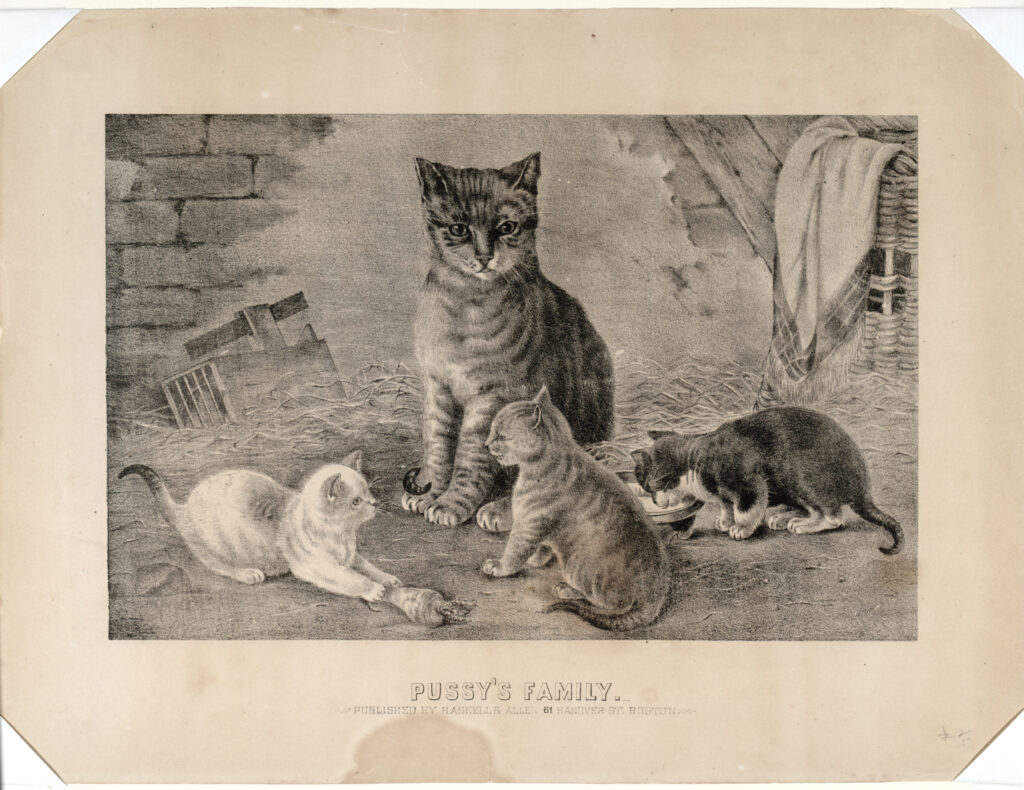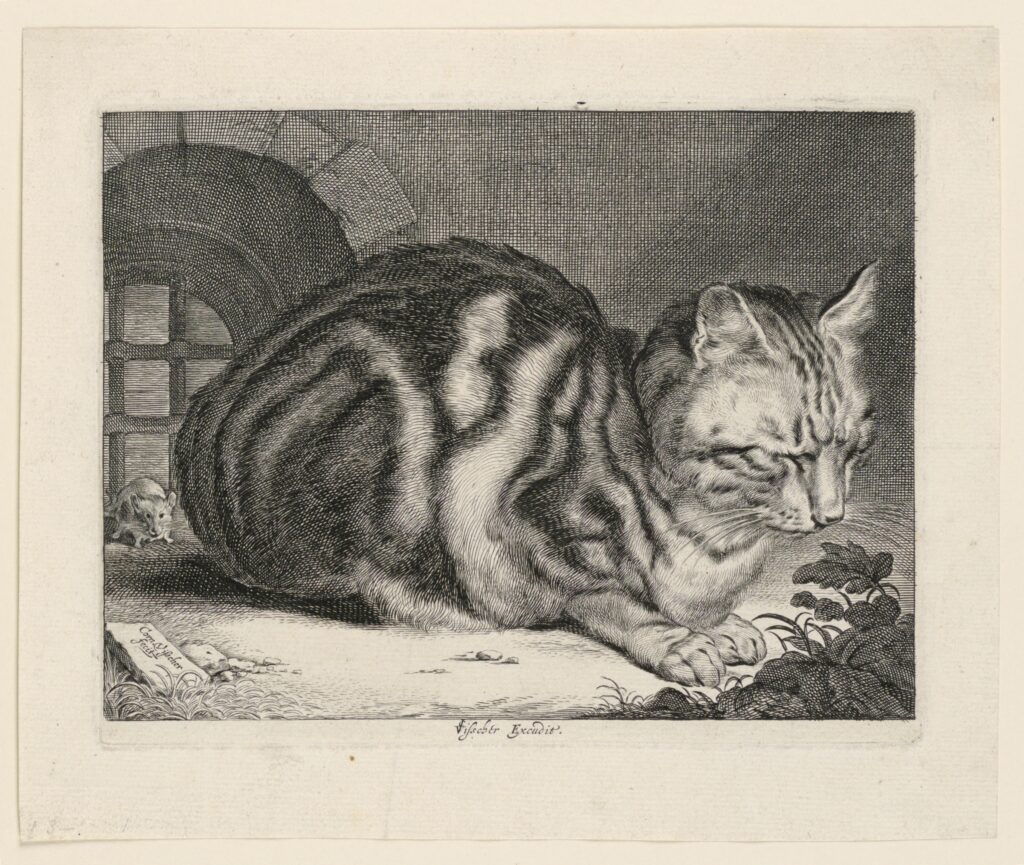Anecdote of a Cat
Author Unknown
Annotations by Josh benjamin

Volumes have been filled with accounts and praises of the sagacity of dogs; but cats seem to have been generally considered an ill-natured, stupid race. The following anecdote, related in “Good’s Book of Nature,” proves that there are some exceptions to this dishonourable character.
“A favourite cat, that was accustomed, from day to day, to take her station quietly at my elbow, on the writing table, sometimes for hour after hour, whilst I was engaged in study, became, at length, less constant in her attendance, as she had a kitten to take care of. One morning, she places herself in the same spot, but seemed unquiet; and instead of seating herself as usual, continued to rub her furry sides against my hand and pen, as though resolved to draw my attention, and make me leave off. As soon as she had accomplished this point, she leaped down on the carpet, and made toward the door, with a look of great uneasiness. I opened the door for her, as she seemed to desire; but, instead of going forward, she turned round, and looked earnestly at me, as though she wished me to follow her, or had something to communicate. I did not fully understand her meaning, and being much engaged at the time, shut the door upon her, that she might go where she liked. In less than an hour afterwards, she had again found an entrance into the room, and drawn close to me; but, instead of mounting the table, and rubbing herself against my hand, as before, she was now under the table, and continued to rub herself against my feet; on moving which, I struck them against something that seemed to be in the way; and, on looking down, beheld with grief and astonishment, the dead body of her little kitten, covered over with cinder-dust. I now entered into the entire train of this afflicted cat’s feelings. She had suddenly lost the nursling she doated on, and was resolved to make me acquainted with it, that I might know her grief, and inquire into the cause. She found me too dull to understand her expressive motioning,—that I would not follow her to the cinder-heap, on which the dead kitten had been thrown,—and she took the great labour of bringing it to me herself, from the area, on the basement floor, up a whole flight of stairs, to lay it at my feet. I took the kitten up in my hand, the cat still following me, and inquired into its death, for which, I found no one was very much to blame; and the yearning mother having thus gotten her master to enter into her cause, and share her sorrows, gradually took comfort, and resumed her former station at my side.”

Author unknown. “Anecdote of a Cat.” The Juvenile Miscellany 4, no. 1 (March 1828): 86-88.
Contexts
During the 19th century, cats were not commonly the domesticated companions they are now. Throughout much of history, aside from ancient Egypt, they were severely mistreated and considered evil. By the mid-1800s, cats were still subject to an undeserved reputation on par with weasels and raccoons, as noted by cat historian Paul Koudounaris in” ‘The Feline States of America’: How Cats Helped Shape the US.”
In an excerpt from her book The Pug Who Bit Napoleon: Animal Tales of the 18th and 19th Centuries, Mimi Matthews recognizes that although cats still lacked the popularity they now have, many Victorian-era cat owners cared enough to hold elaborate funerals for their pets. Several other articles on Matthews’ website offer some historical context for cats.
Resources for Further Study
- An article by Sirin Kale about cats’ inner lives
- The Library of Congress research guide to Cats as Pets
Contemporary Connections
The stereotype of the crazy cat lady persists, although current efforts push back against negative connotations of women and their cats.
- “Claws out! Why pop culture clings to the crazy cat lady” by Lucy Jones
- “How the ‘Crazy’ Cat Lady Became One of Pop Culture’s Most Enduring Sexist Tropes” by Rae Alexandra
- “Why do we label cat lovers as ‘crazy’?” by Kate Demolder
- “The ‘Crazy Cat Lady’: Gender, Animals, and Madness” by Fiona Probyn-Rapsey, from Animaladies: Gender, Animals, and Madness.